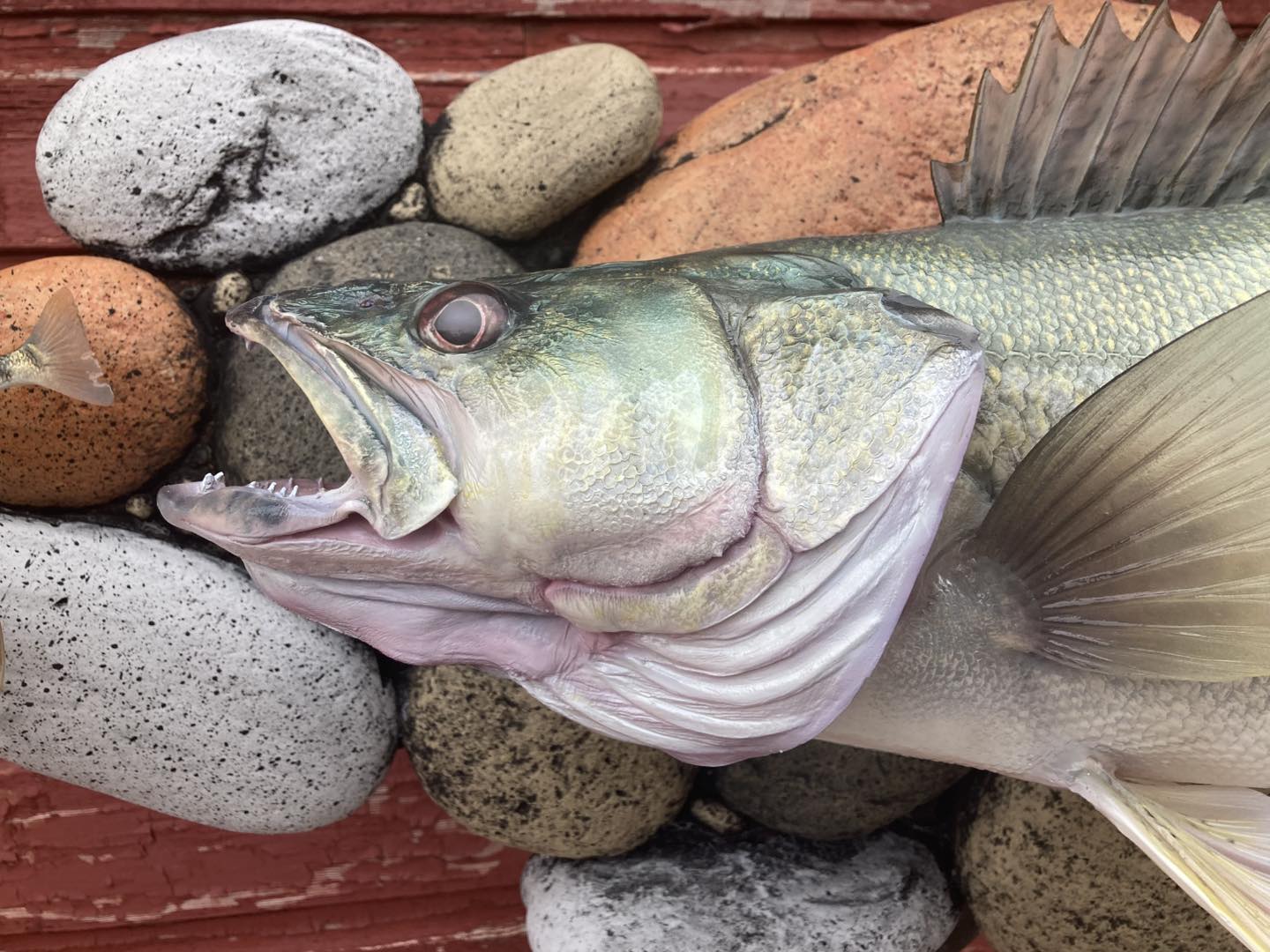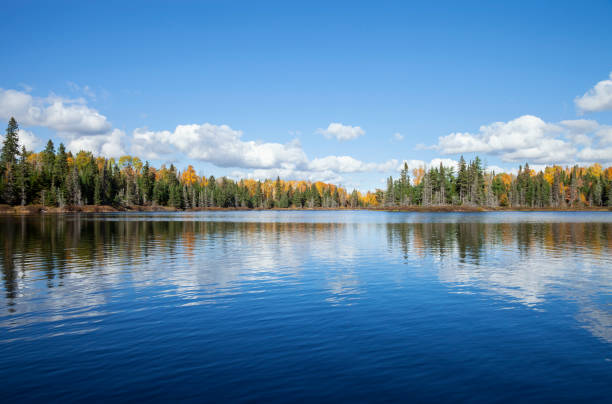

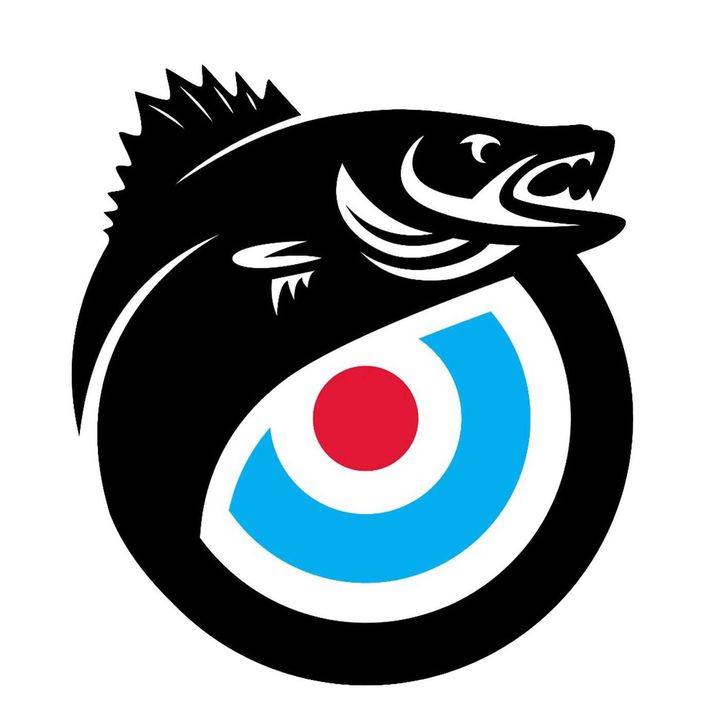
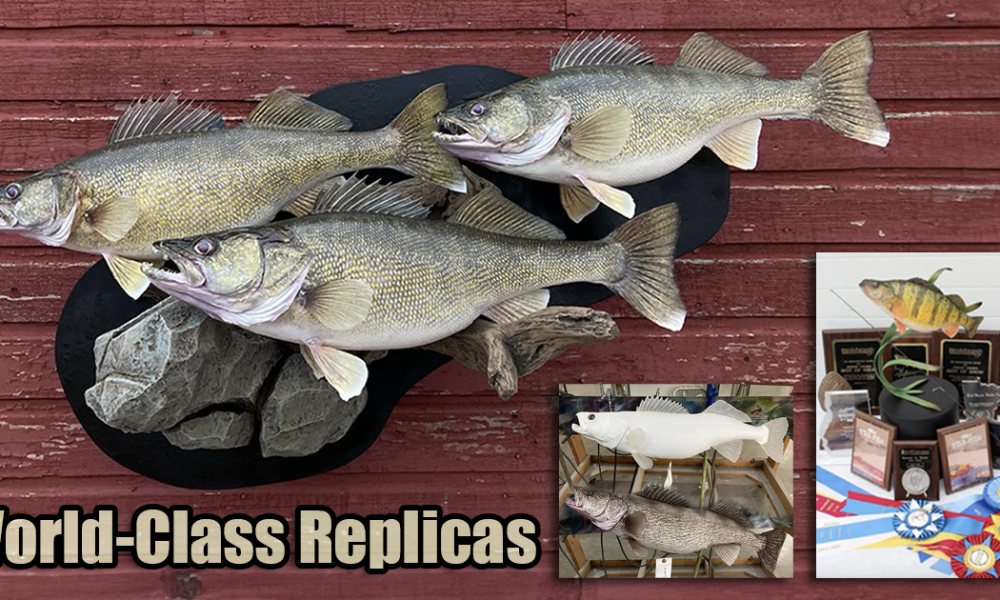
Tyler Erickson is a name you need to know if you’re an angler who’s ever dreamed of preserving a trophy catch. From his roots in southern Minnesota to his world-champion titles, Erickson has spent two decades perfecting fish taxidermy – and he’s on a mission to change how we think about mounting fish. Based in Brookings, South Dakota, this wildlife-and-fisheries grad turned taxidermy innovator is bridging the gap between art, conservation, and cutting-edge craftsmanship with his World-Class Replicas line. We sat down with him to unpack his journey, his process, and why replicas might just be the future of trophy fish preservation.

Erickson’s story starts like many of ours – chasing fish as a kid. Growing up near Fox Lake, Minnesota, he’d bike to the water, rod in hand, spending sun-soaked days reeling in panfish and swimming. “My dad got me into hunting and fishing early,” he recalls. “It was just what we did.” That passion stuck, and by high school, he was eyeing a career as a fisheries or wildlife biologist. He enrolled at South Dakota State University, but a chance encounter shifted his trajectory.
During college, Erickson tagged along on a Lake of the Woods fishing trip his uncle won through a radio contest. They caught walleyes and saugers, but the real catch came on the drive home. A “Rummage Sale” sign next to a giant fiberglass marlin hanging in a yard pulled them off the highway. There, Erickson met a 55-year-old taxidermist fresh out of school. Little did he realize at the time that this encounter would forever alter the course of his life.
“He told me, ‘I wish I’d started this at your age – it’s a great career,’” Erickson says. “He worked winters in Florida, summers in Minnesota, and made decent money.” The seed was planted.
With parental support, Erickson enrolled at a taxidermy school in Wisconsin, juggling it with college. After graduating in 2007 with his degree, he didn’t want to leave Brookings – where he’d met his wife – so he dove into taxidermy full-time. “It was rough at first,” he admits. “Steep learning curve.” But a competitive streak and mentorship from state taxidermy competitions propelled him forward. He racked up 12 state titles across Minnesota and South Dakota, a North American championship, a second-in-world title, and ultimately a best-in-world crown. “Once I hit that goal, I thought, ‘It’s time to give back,’” he says.

Erickson’s “giving back” isn’t just talk – it’s a full-on revolution in fish taxidermy. Frustrated with outdated, inaccurate replicas that took hours of grinding to prep, he started crafting his own molds. “A lot of the old replicas were anatomically off,” he explains. “They didn’t capture the fish right, and taxidermists spent too much time fixing them.” His solution? The World-Class Replicas line, launched in collaboration with McKenzie Taxidermy Supply in 2019.
Today, Erickson offers 155 replica blanks – walleyes from 24 to 34 inches (6 to 18 pounds), crappies, perch, and more – plus species-specific eyes, putty, and gloss. His process is meticulous: molding fresh fish in silicone to capture every scale, fin ray, and gill detail before shrinkage sets in. “I’ll inject water under the cheeks if they’re sinking to plump them back up,” he says. “You’re getting a snapshot of that fish at its peak.”
Contrast that with skin mounts, where shrinkage is the enemy. “You lose 30-40% of the volume in the head, lips, jaws, and fins as they dry,” Erickson notes. “They twist and shrivel, and most taxidermists don’t rebuild it.” Replicas sidestep that entirely, offering a flawless canvas for painting. “I love starting with a blank slate,” he says. “I can match a customer’s photo perfectly without fighting dried, blotchy skin.”

Ever pulled a fish from the water and dreamed of immortalizing it, only to find the mount doesn’t match the memory? Here’s the scoop from Erickson.
A skin mount starts with an incision down the back, measurements, and a foam body – carved or ordered. The head’s cleaned out, the skin prepped, and it’s sewn or stapled shut. Fins are pinned to dry, shrinking over a week or two. “That’s when you see the damage,” Erickson says. Eyes go in, and it’s painted – often relying on faded natural patterns since vibrant colors of life vanish.
Replicas, meanwhile, begin with a mold. Erickson’s World-Class blanks are one-part polyurethane, poured and rotocast for near-seamless results. “You glue on the fins, seam it with putty, set the eyes, and paint,” he says. “It’s like a puzzle – anyone can assemble it.” Saltwater molds, often two-part fiberglass, need more grinding, but his freshwater line is streamlined. The result? A fish that looks alive, not decayed.
Time-wise, skin mounts vary wildly – 30 minutes for a quick paint job, 10 hours if shrinkage is rebuilt. Replicas? Erickson’s got it down to an hour of assembly and 4-5 hours of painting. Cost? Decent skin mounts run $14-25/inch, high-end $25-50/inch. Replicas are $22-40/inch standard, $30-60/inch for top-tier work. “I charge the same for both,” he says, “but [that’s because] I’d rather paint replicas than fix skin mounts. The ultimate goal is to release the fish for someone else to catch.”

Erickson’s not just about aesthetics – he’s a conservationist at heart. “There’s nothing on the market like a replica unless you mold a real fish,” he says. “But once you have that blank, anglers can let trophies go.” Take Minnesota’s latest state-record crappie, the third in 12 months. Erickson’s molding it for a replica, bypassing the scale loss and shrinkage of a skin mount. “It’s huge – makes a 15-inch crappie look small,” he marvels. “We’ll share that blank nationwide.”
His goal? Educate anglers to release big fish unless they’re truly unique. As Erickson puts it: “Nothing out there beats a replica – you’ve got to mold a real fish to get it right. I want to show folks they can have a stunning mount, better than the real thing, and still leave those trophy fish in the water for others to catch again.”
“If it’s a freak – abnormally fat, a state record – keep it,” he advises. “Otherwise, we’ve got blanks for most sizes now.”
His walleye line alone spans 38 molds from 24 to 34 inches, with five more in progress. “We had to kill 38 fish to make that line of replicas,” Erickson admits, “but I’ve got replicas all the way from 24 inches to 34 inches…. The goal in this is to kill a couple fish in order to save hundreds and thousands of them over the years that can go back into the fisheries.”
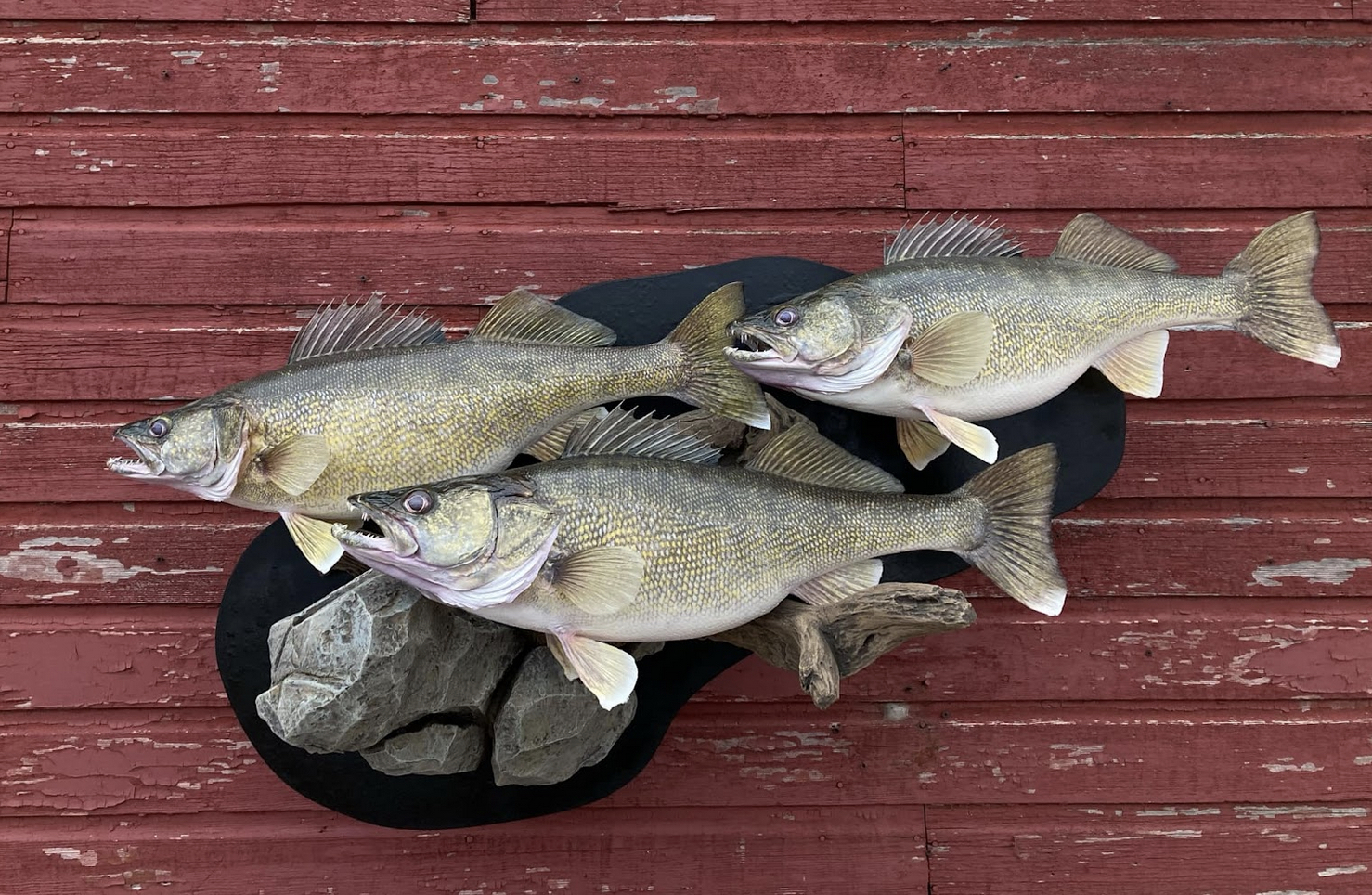
Tyler Erickson’s days now revolve around crafting molds for fellow taxidermists, and his keen eye has landed him gigs judging competitions – proof he’s seen every misstep anglers and taxidermists can stumble into. “The worst move is wrapping a fish in newspaper – it’s a disaster. Instead, lay it flat, tuck the fins in, wrap it in a wet towel, and bag it so your freezer stays clean. That’s the way to keep it perfect.”
His go-to method? “Lay it flat, fold the fins in, wrap it in a wet towel, squeeze out excess water, and bag it. That frozen towel shields those fins.” For oily fish like trout or salmon, he’s got a tweak: “Wrap it in Saran Wrap first – they’re a nightmare for skin mounts, with oils seeping out and trashing the paint.”
“Anglers need to plan ahead,” Erickson says.
Whether you’re leaning toward a skin mount or a replica, here are five things to consider on the water before the fish is dead:
“If you’re thinking replica, grab your camera fast,” Erickson urges. “Get side, top, fins spread – mouth open if you can. Shoot in natural light while it’s wet, before colors fade. Those pics are gold for matching a blank.” Good photos are key to a spot-on replica – capture the fish fresh and vibrant.
“Biggest mistake I see – gutting the fish. It throws off the body and makes it a pain to work with. Keep it whole – freeze it right or let it go with good photos.”
Gutting distorts the shape, complicating the taxidermist’s job – leave it intact.
“Flat, fins tucked, wet towel, bagged – that’s the drill,” he nods. “It’s gotta stay pristine for a skin mount.” Proper freezing keeps it flawless – double-bag big ones, since mangled fish are a headache.
“Unless it’s a freak – record-worthy or crazy fat – let it swim,” he insists. “A 30-inch walleye doesn’t need to die when a replica can nail it. Think conservation – let it fight again.” Save the fishery – only keep the truly exceptional, not every lunker.
“If it’s scarred or torn up, don’t bother,” he advises. “Skin mounts can’t hide flaws. Snap pics, release it, and we’ll build a perfect blank.” Beat-up fish won’t mount well – let them go and opt for a flawless replica.
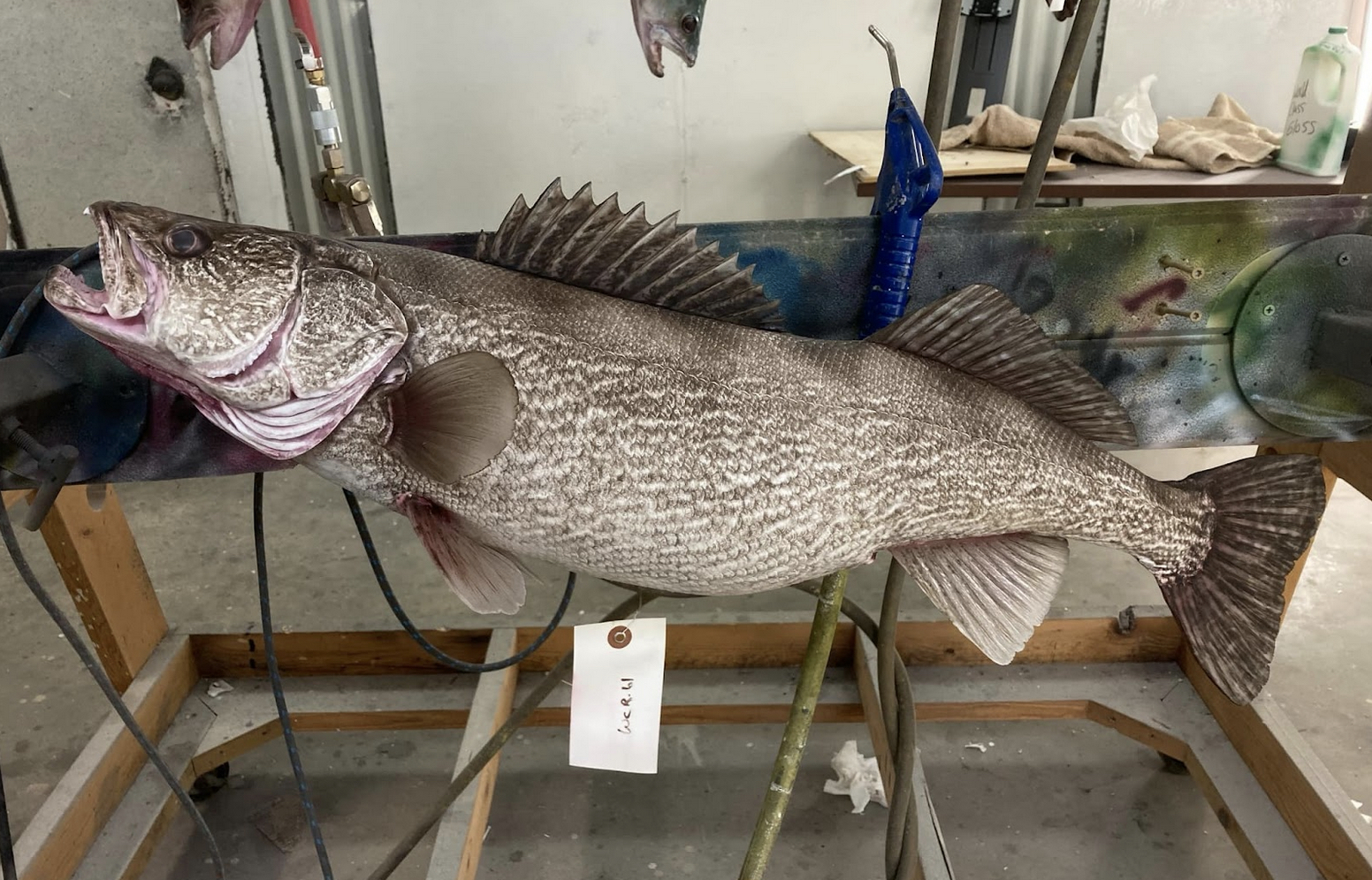
Erickson’s playing a bigger game than just filling orders. ‘My goal is not just to make money,’ he says, ‘but…increase the efficiency of all the taxidermists so they can spend more time with their families…and then ultimately put a better representation of God’s creation on their wall.’ His World-Class Replicas line is growing, with new molds and species in the works….
And he’s always in the market for prime catches to expand it: “I need 22-24-inch smallmouths, 17-inch-plus crappies, 22-inch-plus largemouths – clean, no scars. Freeze ‘em right and get ‘em to me.”
Speaking of giant smallmouths…here’s the story of one he recently harvested through the ice on a frigid South Dakota morning – a fish so wild it felt like Divine Intervention. “I’d been out all night chasing walleyes, but the bite was dead – wrong spot, weird pressure,” he recalls. “I’d bagged a 19- and 20-incher, and just as I started cranking up the shack, my tip-up popped. I ran over, looked down the hole, and there it was—22 inches of smallmouth fury thrashing under the ice. Thank you, Lord!” Grinning, he admits, “I’d been hunting one like that for years to mold. Never thought I’d pull it myself – that chunky beast showed why I do this: capture the freaks so anglers can let ‘em swim and still hang a trophy.”

Erickson’s mission runs deep. “We had to kill 38 fish to make that line of replicas,” he says of his walleye blanks, “but the goal is to kill a couple to save thousands.” It’s about thriving fisheries – letting a 30-inch walleye hit 12 pounds, then 13, the same fish sparking more tales each year.
Track him down on Facebook at Tyler Erickson or Top Notch Taxidermy, and check his World-Class Replicas page. Or give him a call (605-691-1145) or email him at Topnotchtaxidermy@hotmail.com…. His gear – blanks, eyes, and more – awaits through McKenzie Taxidermy Supply.
Next time a trophy lands in your hands, pause and take a deep breath. Snap the pics, heed his advice, and let it swim – Erickson’s replicas will keep that memory alive on your wall for a lifetime.
PS: When I say he specializes in all things fish, that even includes premium Lake Winnipeg, Manitoba “greenback” walleye replicas:
